For a better future, study the past.
Menu
For a better future, study the past.
Located outside the incredible British Library in London is the impressive sculpture titled ‘Newton’ After William Blake, crafted by Eduardo Paolozzi.
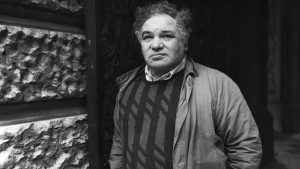
Paolozzi was born in Edinburgh, Scotland, United Kingdom, to Italian immigrants on March 7, 1924. Growing up, Paolozzi’s father was an admirer of Benito Mussolini and sent his son to youth camps in Italy for several years.
When Italy declared war on the United Kingdom in June 1940, young Eduardo, his father, and grandfather were all imprisoned under the Emergency Powers Act. Eduardo spent three months in Saughton Prison. His father and grandfather were put aboard the Arandora Star and were to be transported to Canada for detention.
The Arandora Star was constructed in 1925 and had served as a cruise ship based out of Southampton before being pressed into military duty. In June 1940, she left Liverpool with a passenger list including 174 officers and men, 200 military guards, 734 interned Italian men, 479 interned German men, and 86 German prisoners of war, destined for Newfoundland.
Early on the morning of July 2, she was struck by a torpedo launched by a German submarine, U-47. Eight hundred and five passengers lost their lives in the attack, the majority drowning. Among the dead were young Eduardo’s father and grandfather.
Upon his release, Eduardo attended classes at Edinburgh College of Art before being drafted in 1943. He spent more than a year in the Pioneer Corps before being released from service. He then began attending the Slade School.
Here the young artist was developing his talents and style. In 1947 he was given his first solo exhibition at the Mayor Gallery, where all his work sold. He was to then spend time in Paris before returning to London. In Paris he had come to learn of Dada and Surrealism and began to experiment with collage.
During the 1950s, Paolozzi began to produce architecturally based works. He also began to experiment with printmaking. His interest in collage continued however and as Frank Whitford wrote for the Guardian, “Everything he created began as an accumulation of unrelated images culled from a wide variety of sources which, when rearranged, achieved a new and surprising unity.”
In the 1960s his sculpture began to further incorporate his interest in collage. As Whitford writes of Paolozzi, “…regularly visited the dry docks, collecting discarded components from the wrecking yards. He used these, together with standard engineering parts ordered from catalogues, to create sculptures which simultaneously suggested curios machines and totems from some lost but technologically advanced culture.”
After a period of creative doldrums, Paolozzi moved to West Berlin in 1974. In Berlin he regained his creative energies producing abstract prints. He would later serve as a professor at the Colgone Fachhochschule and later served at the Munich Academy.
With his creativity at a high level. Paolozzi was awarded multiple public commissions in both Germany and Britain. During the long construction of the British Library, architect Sir Colin St. John Wilson commissioned Paolozzi to produce a sculpture to grace the piazza outside the library. The result: ‘Newton’ After William Blake.
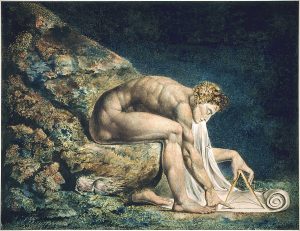
The British Library describes Blake’s painting, “Blake’s original watercolor shows Newton surrounded by the glories of nature but oblivious to it all. Instead, he is focused on reducing the complexity of the universe to mathematical dimensions, bending forward with his compass.”
Installed in 1995, the sculpture is a bronze measuring twelve feet tall. Casting of this work was done by the Morris Singer Foundry. Singer was established in 1848 and has cast many well-known sculptures, including the Trafalgar Square Lions.
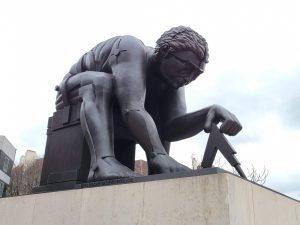
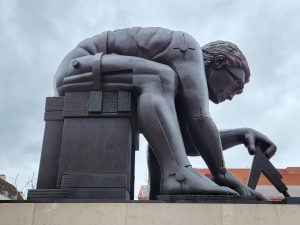
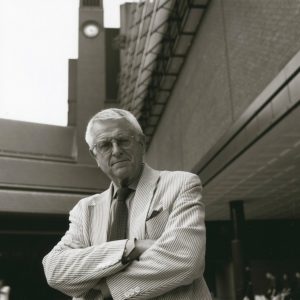
In discussing his work, Paolozzi said, “While Blake may have been satirizing Newton, I see this work as an exciting union of two British geniuses. Together, they present to us nature and science, poetry, art, architecture-all welded, interconnected, interdependent.”
This interconnection between is shown in the physical sculpture itself. The body of Newton is shown in a seemingly mechanical way. Newton is held together with bolts in the major joints.
To hear more about this sculpture from the architect Sir Colin St. John Wilson click here. This interview excerpt is about two minutes long.
A model of the sculpture was given to the Isaac Newton Institute for Mathematical Sciences. A bronze cast of Newton is in the collection of the Tate Gallery. A similar sculpture is held at the Scottish National Gallery of Modern Art in Edinburgh.
As he grew older, Paolozzi began to consider his legacy. He undertook a philanthropic role, donating prints to museums in Britain and other countries. His largest donation was to the National Galleries of Scotland which houses a studio with his name.
Paolozzi suffered a stroke in 2001 and passed away in April 2005.
You may examine the life of artist Eduardo Paolozzi in more detail in this work by art historian Judith Collins. Eduardo Paolozzi chronicles the development of European art from the 1950s through the late 1990s. At over 300 pages and heavily illustrated this is a must for anyone interested in learning about this amazing artist.

This post may contain affiliate links. If you click these links and make a purchase, I may receive a small commission. This commission does not affect any price that you pay. All views and opinions provided are my own and are never influenced by affiliate programs or sponsors providing products.
Sources
British Library. Isaac Newton Sculpture by Eduardo Paolozzi. https://www.bl.uk/about-us/our-story/explore-the-building/isaac-newton-sculpture
Guggenheim Museum. Eduardo Paolozzi. https://www,guggenheim.org/artwork/artist/eduardo-paolozzi
Whitford, Frank. Sir Eduardo Paolozzi obituary. htps://www.theguardian.com/culture/2005/apr/22/obituaries